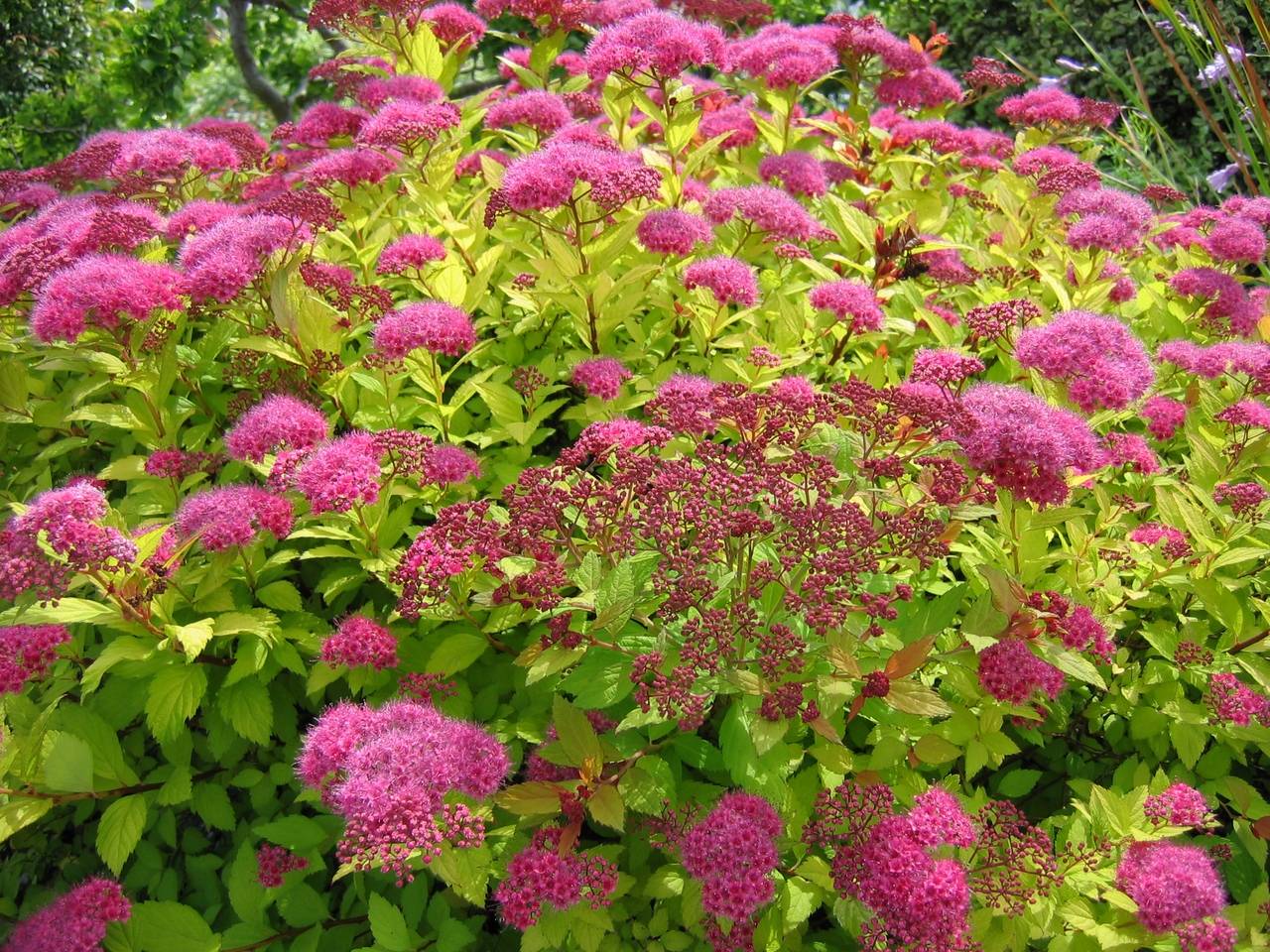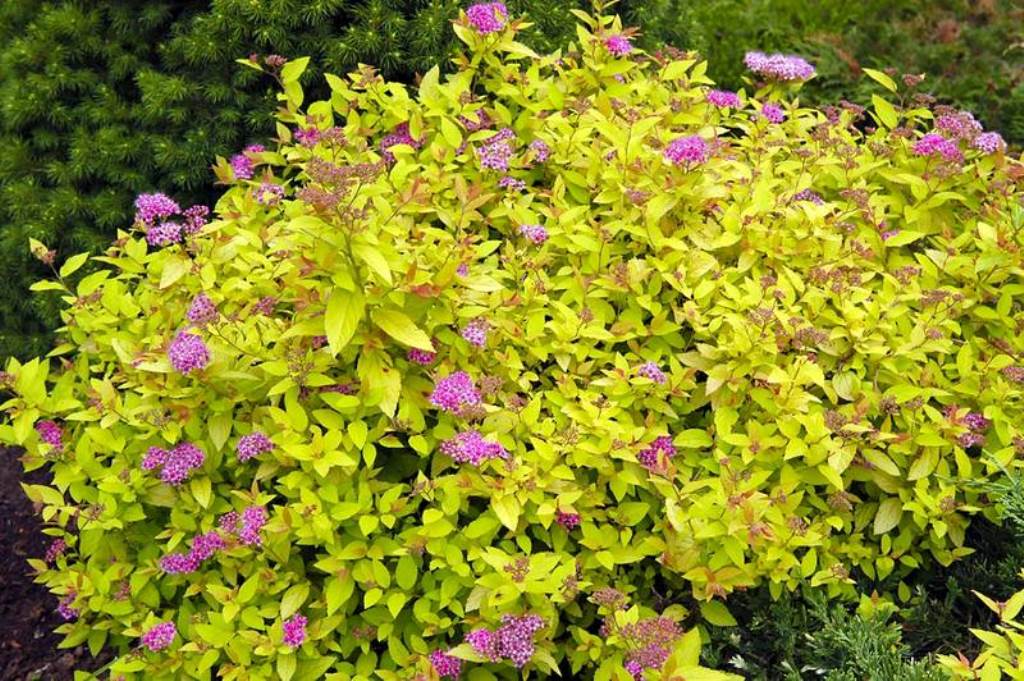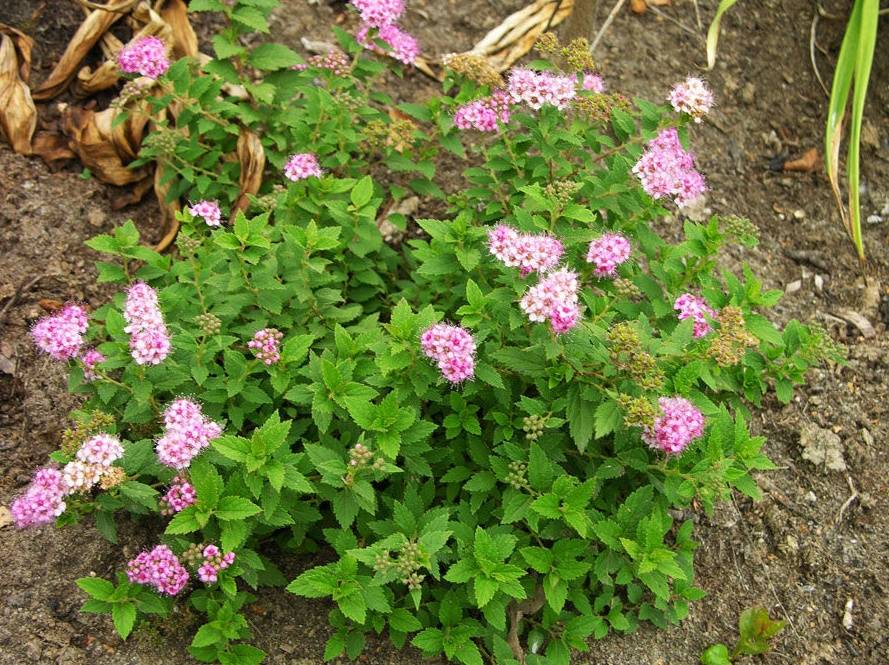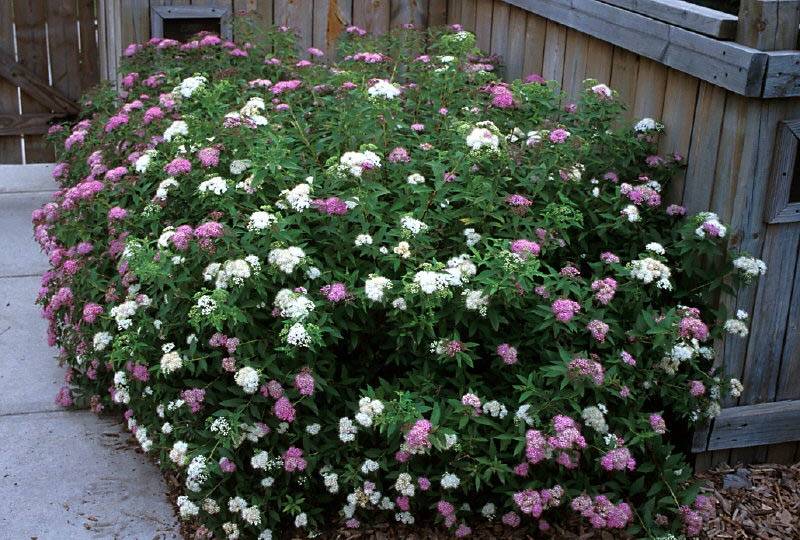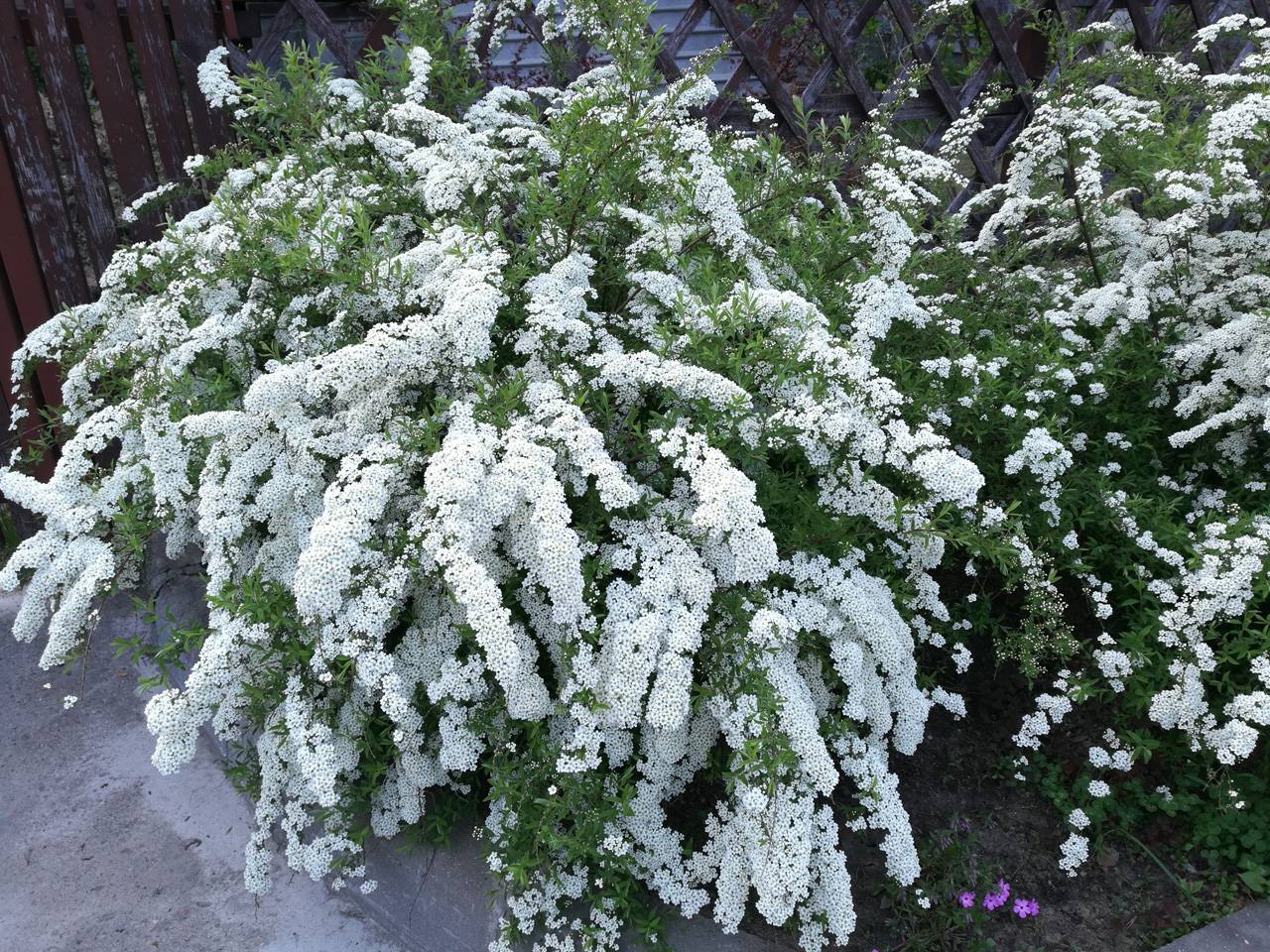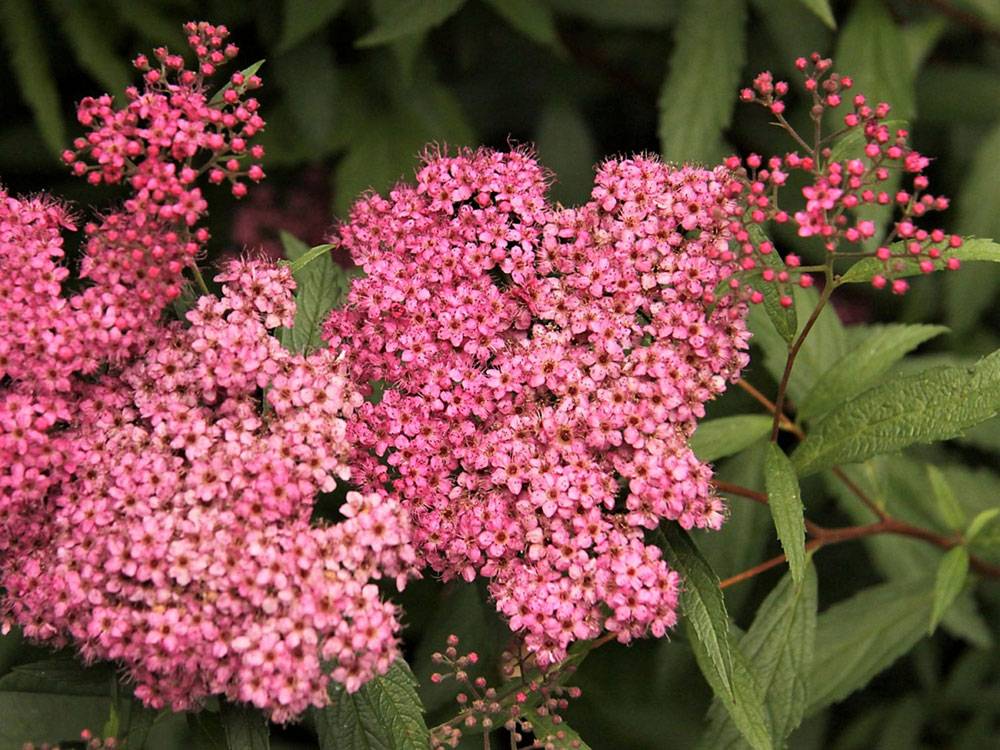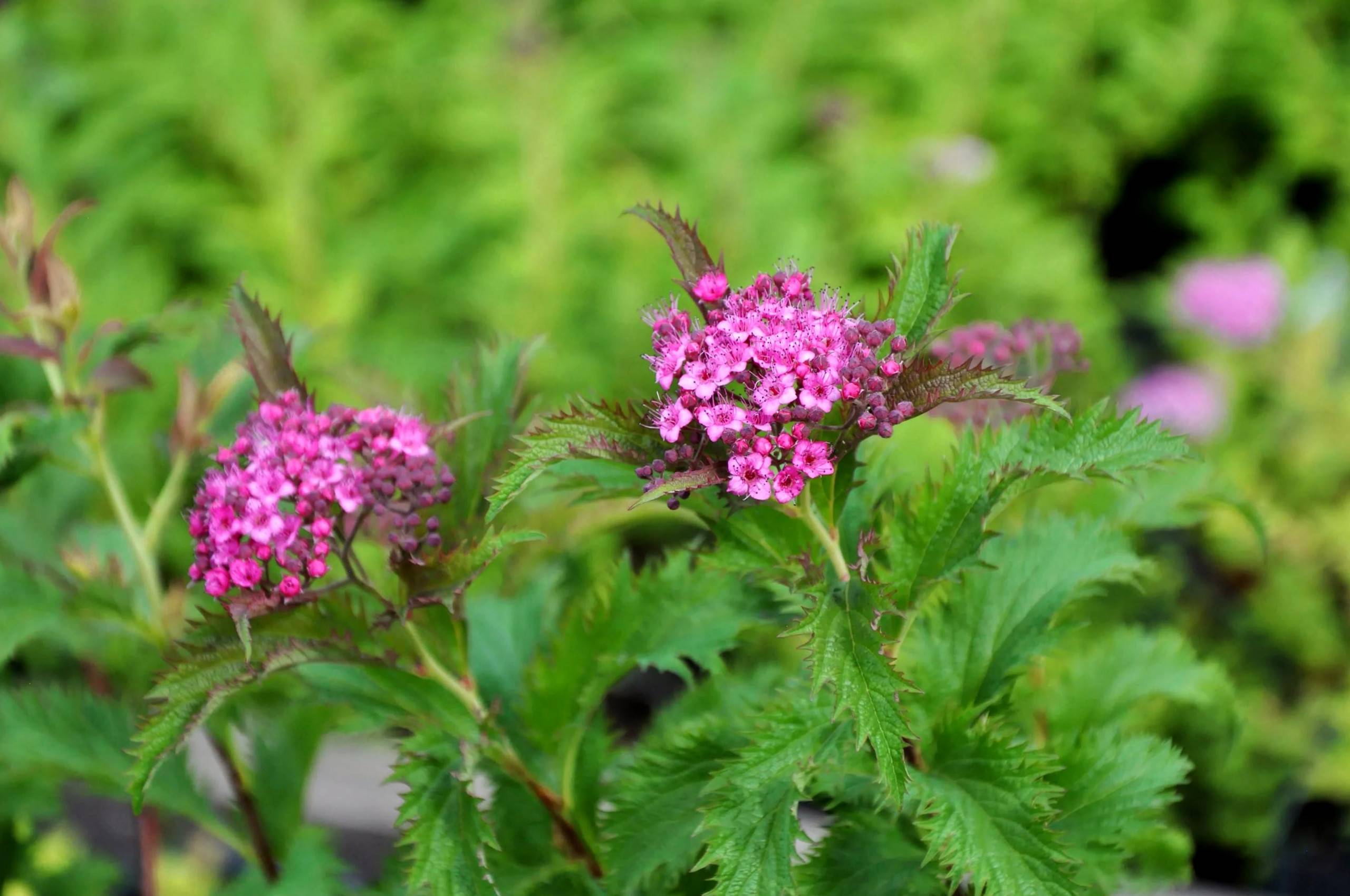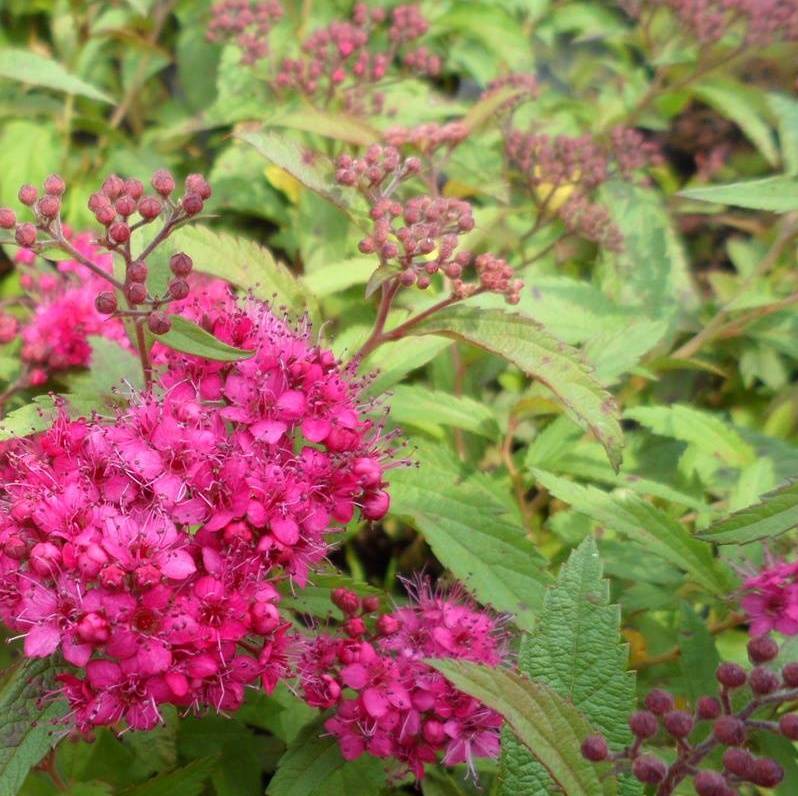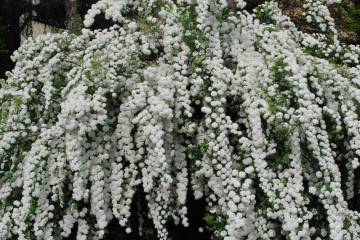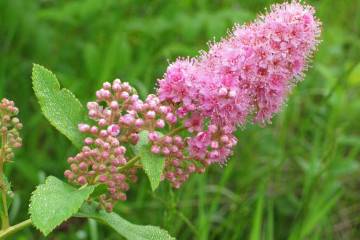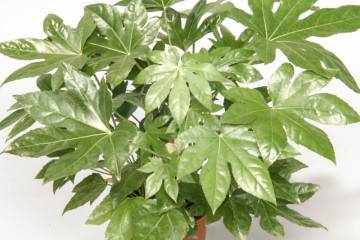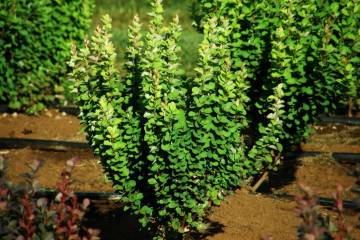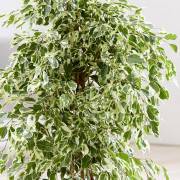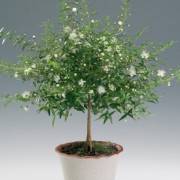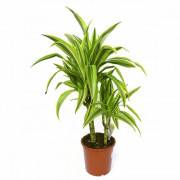Spirea Japanese and gray - description, planting and care
Content:
A deciduous ornamental shrub - Japanese spiraea is a frequent visitor to Russian gardens, as it looks beautiful during and after flowering. The variety of varieties includes ground cover, tall and other forms, including those used to create hedges.
Japanese spirea: description of popular varieties
A shrub with oval toothed leaves - Japanese spirea (Latin Spiraea japonica) is a member of the Pink family (Latin Rosaceae). The height, depending on the variety, varies widely - 0.8-2.0 m. In the wild, the plant is found in Japan, Korea, China. At the ends of the branches in spring and summer, lush bright inflorescences are formed, from which, after pollination, many small (up to 2.5 mm in length) seeds appear.
Spirea Japanese Golden Princess
Plant height does not exceed 1 m. Crohn's shape is close to a ball. Flowering - summer, buds are formed only on young shoots. Each branch lives for an average of 7 years. Leaves from spring to autumn change color, going from golden to reddish, and then to ocher and bronze shades. Oval leaves 7 cm long have a serrated edge. The inflorescence is in the form of a scutellum, about 40 mm in diameter, painted in red and pink-purple shades. An excellent honey plant suitable for decorative cutting.
Spirea Japanese Little Princess
Shrub from 60 cm to 1.2 m in height. Annual growth is 10-15 cm. Life expectancy is 25-30 years. In summer, the leaves are painted in an emerald green tone, and in autumn they acquire an orange-red color. Bloom lasts from June to September. The shield-shaped inflorescences at the ends of the shoots are composed of tiny purple-pink flowers.
Spirea Japanese Goldflame
Sprawling shrub 60-90 cm high has upward red-brown shoots with a waxy bloom. Annual growth does not exceed 10 cm. Leaves 2-6 cm long are oval in shape with jagged edges and change color during the season. At first they are bright green, then bronze-golden, and in the fall - bronze-brown. Flowering lasts from the first decade of June to September. Shield-like brushes bear pink flowers, luring pollinators with a pleasant aroma.
Spirea Japanese Shirobana
Varietal group, in which there are many rather diverse varieties, among which the most famous is Genpei. Shrub up to 80 cm in height blooms all summer. The rounded crown spreads out 1.2 m wide. Brown shoots have tomentose pubescence. Narrow oval leaves up to 2 cm long are painted green from the face, and from the inside they have a bluish (ash) edge.
Spirea Japanese Crisp
The rounded crown of bushes up to 80 cm high has straight, highly branching shoots, which are distinguished by good elasticity. Oval leaves with wavy edges change their hue from red in spring to dark green in summer, and then to scarlet or orange in autumn. Delicate pink inflorescences up to 6 cm in diameter are formed all summer long exclusively on last year's shoots.
Decorating a personal plot using Japanese spirea plantings
The purpose of a particular variety depends on its size. The undersized Little Princess can be used to decorate a curb or rockery. Crispa is good for single planting against a backdrop of green lawns. A fairly dense hedge is easy to get from Shiroban or Golden Princess.
Spirea gray Grefsheim (Grefsheim)
The unusual appearance and spectacular flowering of this variety of spirea was highly appreciated by landscape designers. It is she who is often called "the bride" among the people, and also the meadowsweet. It is a competitor of lilacs and hydrangeas in popularity in ornamental gardening in central Russia.
The origin and appearance of the plant
The hybrid obtained by the German botanist Hermann Zabel by crossing the St. John's worm spirea (Latin Spiraea hypericifolia) and whitish-gray (Latin Spiraea cana) was named gray spirea (Latin Spiraea cinerea). It has been cultivated in gardens and parks since 1884.
Shrub 90-180 cm high has long, arched drooping branches, densely leafed with lanceolate leaves of gray-green color. Highly prized for its incredibly lush bloom, lasting at least 4 weeks from mid-May.
Plant flower description
Numerous shield-shaped inflorescences are formed along the entire length of the branches. Each contains a different number of small flowers (up to 1 cm in diameter). The petals are white, in each corolla there are 5 pieces. The core of the flower consists of numerous yellow stamens.
Application in landscape design
The shrub looks most impressive in the open, where nothing blocks its beauty. In private houses, it is often planted along the fences. The branches of meadowsweet, which are lushly blooming in the spring, hanging over the fences, turn entire streets into a foamy snow-white cloud.
Spirea Bumald
A hybrid of Japanese spirea and white-flowered (Latin Spiraea albiflora) - Bumald's spirea (Latin Spiraea bumalda) was obtained in 1891. The shrub has much in common with meadowsweet, but differs in lilac-pink color of flowers.
Description of varieties of spirea Bumald
Today nurseries offer quite a few varieties of Bumald spirea, differing in size and flowering duration. The key difference from the gray spirea (meadowsweet) is the long flowering period, which lasts from late spring to September. The plant is very resistant to gas-polluted air, it is completely undemanding to soil fertility, therefore it is widely used in landscaping parks and squares in the city.
Spirea Bumald Anthony Vaterer
A beautiful compact shrub has a spreading crown up to 1 m tall. Flowering lasts from June to September. Shield-shaped inflorescences up to 15 cm in diameter consist of bright pink or crimson flowers. Young foliage is colored red-pink, turns dark green in summer, and blazes with purple and orange-red tones in autumn.
Spirea Bumald Frobeli
The variety attracts attention with a purple hue of young spring foliage, which turns dark green in summer. From mid-June to mid-September, bushes up to 120 cm high bloom with lush crimson inflorescences. In autumn, the crown of the shrub becomes bronze-scarlet.
Spirea Boomald Crisp
A short, very compact shrub up to 60 cm high and up to 80 cm wide has a shorter flowering period no more than 50 days in length from the first half of July. Inflorescences are painted in a raspberry shade.Serrated leaves with wavy edges are burgundy in spring, green in summer, and yellow-copper in autumn.
Spirea Bumalda Darts Red
In this variety, the shoots are directed upward and reach a height of only 60-90 cm. Flowering lasts 2 months from the first decade of July. Inflorescences are pink-crimson. The shrub is beautiful all season. Ideal for forming low hedges and curbs.
Spirea Bumald in garden design
In spirea flower beds, Bumald can play the role of a lush backdrop, against which the ground cover looks very advantageous. The traditional compositional solution is the decoration of tall trees with a pyramidal crown with a spirea, as well as conifers, with which the meadowsweet, undemanding to fertility, adjoins without prejudice to itself.
Features of plant agrotechnology
Spirea can be planted wherever frosts do not fall below -30 degrees in winter. Pits are dug 40 cm deep 2-3 days before planting and watered. A thin layer of drainage from sand or fine gravel is poured onto the bottom. In an ordinary planting, a distance of 35-40 cm is maintained between the holes.
The seedling is examined, the roots longer than 30 cm are shortened. Planting is carried out so that the root collar is flush with the ground level. If the soil is fertile, then no fertilizer is applied to it. A little peat and mineral fertilizers are added to the depleted soil. Next, you need to water the bushes abundantly. The planting dates for summer-flowering varieties are early April, when the buds have not yet blossomed. Spring-flowering varieties are planted in the fall.
Care at different times of the year, wintering
In order for the bush to maintain a neat rounded shape, it needs pruning every year. It is performed in the fall at the end of the leaf fall, or in the spring before bud break. At the end of flowering, you should immediately cut off all dried branches.
Top dressing is done in the summer. You can alternate watering with mullein solution and adding superphosphate (10 g per 1 bush). In the first year, fertilizers are not applied, but from the second year you can use universal preparations, for example, "Kemira".
In winter, it is advisable for young bushes to provide root protection. For this, mulch and geotextiles are used, covering the near-stem circles. When planting, it is worth installing pegs, and tying the crown to them so that it does not tangle over the winter.
Reproduction methods
Spirea is a plant that easily propagates by the seed method, as well as by layering. On sale, you should pay attention to the seedlings of new varieties, characterized by long and abundant flowering.
Seed propagation
In March, sowing is carried out in fertile loose soil for seedlings. Seedlings should be expected within 2-3 weeks. At the stage of 3-4 true leaves, a pick is carried out. At the end of May, seedlings are planted in open ground, necessarily pinching the main root. During the first summer, irrigation should be carried out as the soil dries out.
Reproduction by layering
Each adult bush can give up to 5 daughter plants per season, if propagation by layering is used. As soon as the buds bloom in the spring, the branches are bent to the soil, fixed with wire pins and sprinkled with soil. If you water the bush itself and the layers abundantly during the summer, then next spring it will be possible to plant young seedlings.
Plant seedlings
You can buy planting material for new varieties of spirea in specialized nurseries. The quality of seedlings is determined by the following criteria:
- Closed root system. It is better not to buy plants without soil on the roots, because the savings will result in the risk of the death of bushes with a dry root system.
- The buds may be slightly bursting, but not completely blossoming.
- There can be several branches of the second order, but not too many.
- The bark of a healthy cutting is light green.
- Root length - no more than 30 cm.
Application in landscape design
Each of the modern varieties and hybrids of the Japanese spirea looks great in a single planting. At the same time, time-tested decorative solutions are widely used:
- Border - low-growing varieties (Little Princess, Shirobana, Spiraea bumalda Anthony Waterer, Goldmound spirea, etc.) are used for its cultivation. The bushes are planted in a row along the paths, leaving a minimum distance of 40-50 cm between them, often alternating between plants with a contrasting color of inflorescences.
- Rockeries and rockeries - varieties of spirea with a dense crown are suitable for them. The shrub looks very impressive against the background of conifers, as well as in the company of related varieties with a contrasting color of foliage, for example, Spirea Magic Carpet.
- Single planting - tall varieties are used for it, for example, gray spirea. Plants are planted near benches, gazebos, bridges, entrances, etc.
- Hedge - varieties with a height of more than 80 cm are suitable for it (gray, Spiraea bumalda Froebelii, macrophile spirea, etc.). Rows of bushes planted close to each other help to zone the garden area, highlighting sites that are different in their functionality.
Diseases and pests
Spirea plantings are exposed to the invasion of aphids, spider mites, whiteflies and meadowsweet sawflies. If specific signs are identified, it is necessary to immediately treat the bushes with an appropriate insecticide or acaricide. The preparations "Aktelik", "Fitoverm", "Karbofos" have proven themselves well.
Meadowsweet very rarely suffers from diseases, their appearance usually provokes waterlogging or planting in too heavy soil, in which there are practically no rippers. If spots are found on leaves, wilted tips of shoots and other signs of disease, plants are treated with fungicides of a wide spectrum of action - Fundazol, Bordeaux liquid, Fitosporin-M.
In the garden or on the backyard, it is enough to plant one Japanese spirea bush in order to fully appreciate the many advantages of this beautiful and very unpretentious ornamental plant. The temptation to pair it with several other varieties with different shades of inflorescences is impossible to overcome!
